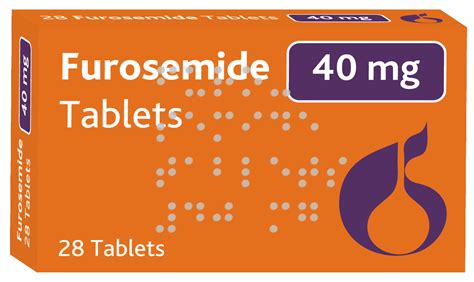Intro
Discover Furosemide 40mg uses, a diuretic medication treating edema, fluid retention, and hypertension, with applications in heart failure and nephrotic syndrome management.
Furosemide, commonly known by its brand name Lasix, is a medication that belongs to the class of loop diuretics. It is widely used in the medical field for its ability to treat various conditions related to fluid retention and edema. The 40mg dosage of Furosemide is one of the most prescribed strengths, offering an effective balance between therapeutic benefits and potential side effects. Understanding the uses of Furosemide 40mg is crucial for patients and healthcare providers to ensure its safe and effective administration.
The importance of Furosemide 40mg lies in its mechanism of action, which involves inhibiting the sodium-potassium-chloride cotransporter in the thick ascending limb of the loop of Henle. This action leads to increased urine production, helping the body eliminate excess fluid. This process is vital for managing conditions characterized by fluid overload, such as heart failure, liver disease, and a kidney disorder known as nephrotic syndrome.
Furosemide 40mg is particularly beneficial for patients suffering from edema associated with congestive heart failure, hepatic cirrhosis, and renal disease, including nephrotic syndrome. By facilitating the removal of excess fluid, it helps alleviate symptoms such as swelling in the legs and ankles, shortness of breath, and fatigue, thereby improving the quality of life for these patients. Moreover, its diuretic effect is rapid, making it a valuable medication in acute settings where quick relief from fluid overload is necessary.
Introduction to Furosemide 40mg

Benefits of Furosemide 40mg

Therapeutic Uses
Furosemide 40mg has several therapeutic uses, including: - Treatment of edema associated with congestive heart failure, hepatic cirrhosis, and renal disease. - Management of hypertension. - Treatment of acute pulmonary edema. - Management of hypercalcemia (elevated calcium levels in the blood).Working Mechanism of Furosemide 40mg

Steps for Administration
For the effective administration of Furosemide 40mg, the following steps should be considered: 1. **Dosage Adjustment**: The dosage should be adjusted according to the patient's response. 2. **Monitoring**: Regular monitoring of urine output, electrolyte levels, and blood pressure is necessary. 3. **Hydration**: Patients should be advised to stay hydrated to avoid dehydration, a potential side effect of diuretics. 4. **Dietary Advice**: A diet low in sodium may be recommended to enhance the medication's effectiveness.Side Effects and Precautions

Potential Interactions
Furosemide 40mg can interact with other medications, including: - **Lithium**: Increased risk of lithium toxicity. - **Aminoglycosides**: Increased risk of ototoxicity. - **Corticosteroids**: Increased risk of hypokalemia.Practical Examples and Statistical Data

Statistical Overview
- **Efficacy Rate**: Up to 90% of patients experience significant diuresis. - **Response Time**: The diuretic effect is observed within 1 hour of administration. - **Patient Satisfaction**: High levels of satisfaction are reported due to rapid relief from symptoms.Conclusion and Future Directions

Final Thoughts

Call to Action

What is Furosemide 40mg used for?
+Furosemide 40mg is used to treat edema (fluid retention) in people with congestive heart failure, liver disease, or a kidney disorder such as nephrotic syndrome.
How does Furosemide 40mg work?
+Furosemide 40mg works by inhibiting the sodium-potassium-chloride cotransporter in the loop of Henle, leading to increased urine production and helping the body eliminate excess fluid.
What are the common side effects of Furosemide 40mg?
+Common side effects include increased urination, dehydration, and hypokalemia (low potassium levels). It is essential to report any side effects to a healthcare provider.
Can Furosemide 40mg be used for hypertension management?
+Yes, Furosemide 40mg can be used to help manage hypertension by reducing fluid volume and lowering blood pressure.
How should Furosemide 40mg be taken?
+Furosemide 40mg should be taken as directed by a healthcare provider, usually once or twice a day, and with plenty of water to stay hydrated.
